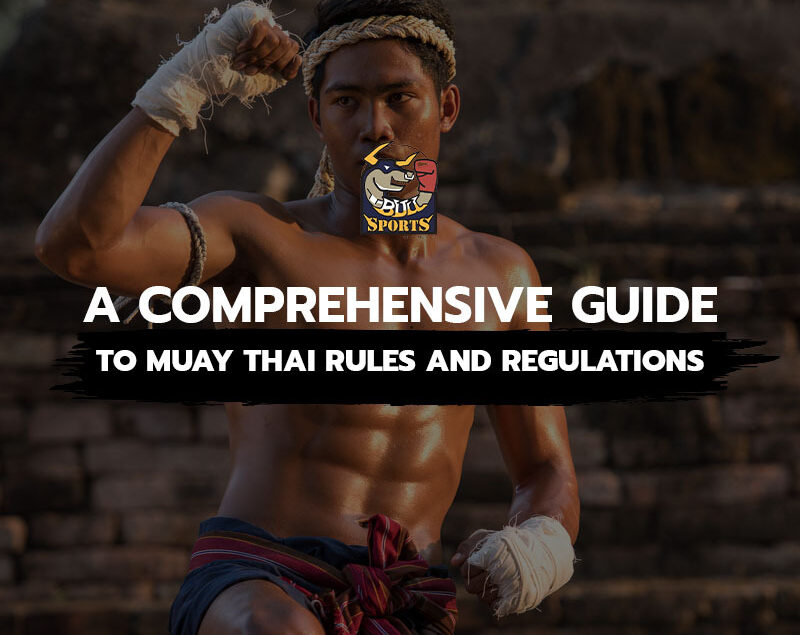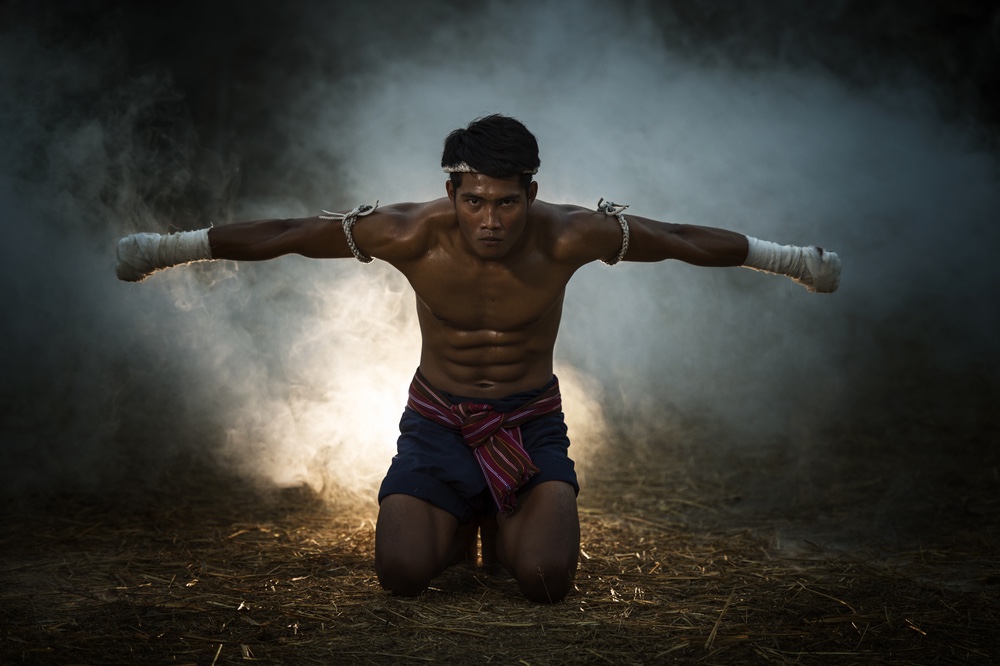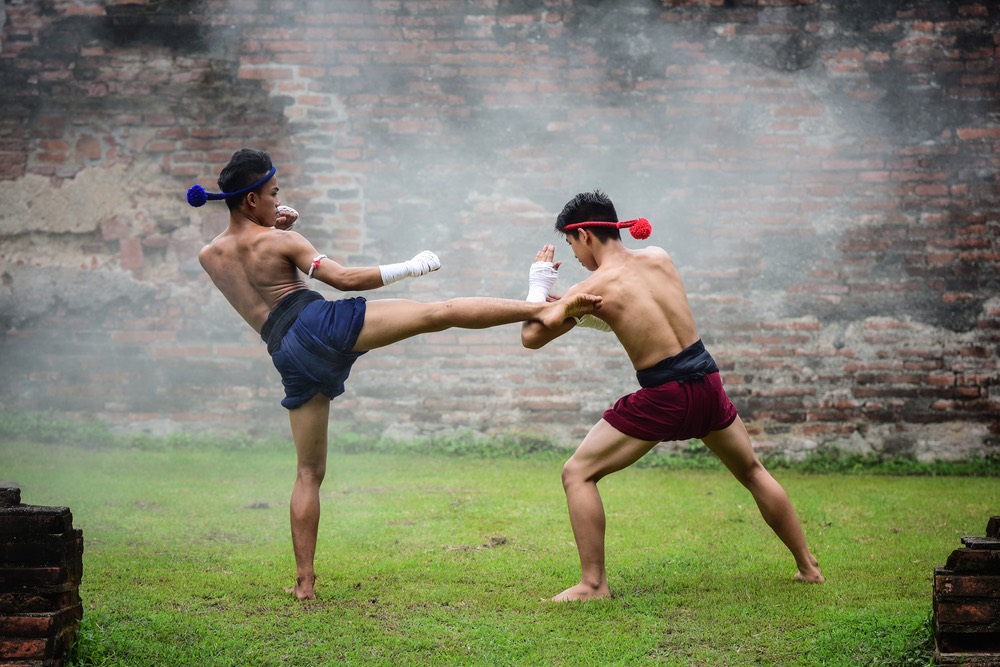
For newcomers to Muay Thai, understanding its intricate rules and regulations is essential for ensuring safety and fairness in competition. This comprehensive guide aims to provide an in-depth look at the foundational rules that govern Muay Thai, covering everything from scoring criteria and permissible techniques to the necessary attire and conduct expected of fighters. Whether you are a beginner, an experienced practitioner, or an enthusiastic spectator, this guide will equip you with the knowledge needed to fully appreciate and engage with the rich and disciplined world of Muay Thai.
The Popularity of Muay Thai Both Locally and Globally
Muay Thai is currently popular among both Thai people and foreigners. It began to gain fame in the late 20th century and became well-known internationally at the beginning of the 21st century through various media broadcasts in Thailand and abroad.
The unique charm of Muay Thai lies in its blend of martial art and cultural heritage. It has been an integral part of Thai life for hundreds of years. Factors contributing to Muay Thai’s global appeal include the graceful and distinctive movements known as “Mae Mai Muay Thai,” the lively and exciting atmosphere around the ring, and the intense matches where the outcome can change in an instant.
The Ministry of Culture of Thailand has registered Muay Thai as a “National Intangible Cultural Heritage in the Field of Thai Sports Wisdom” to promote awareness of its value and honor the knowledge and wisdom of Thai ancestors. Efforts are underway to have UNESCO list Muay Thai as a World Heritage.
Today, foreigners visiting Thailand frequently consider attending a live Muay Thai match a must-do activity. Many are so captivated by this national martial art that they seriously commit to training in it. As of 2023, there are over 5,000 Muay Thai camps and gyms across Thailand that can accommodate international tourists.
The Wai Kru Ceremony and Its Significance

“Wai Kru” in Muay Thai is a traditional ritual representing respect, gratitude, and acknowledgment toward teachers, trainers, and ancestors. Performed before a fight, this ceremonial dance allows fighters to honor their mentors, celebrate the sport’s cultural heritage, and mentally prepare for the about. Additionally, it pays homage to sacred beings who offer protection and safeguard the practitioner from potential dangers. The dance symbolizes strength and motivation, instilling fearlessness and confidence in the face of opponents while also serving as a warm-up by stretching and preparing the body for the fight.
This practice underscores the core values of Muay Thai: respect, discipline, and mindfulness. It highlights the profound connection between teacher and student, and the lessons learned through “Wai Kru” extend far beyond the ring, shaping the practitioner’s character and influencing all aspects of their life.
The Importance of Knowing Muay Thai Rules and Regulations
Understanding the rules and regulations of Muay Thai is essential for both fighters and spectators, as it significantly impacts the competition and skill development in several ways:
Safety
Rules specify allowed techniques and prohibitions to prevent injuries and ensure fighters’ safety.
Fairness
Knowing the rules ensures that competitions are conducted fairly, affecting both judging and scoring.
Skill Development
A clear understanding of the rules enables fighters to enhance their skills effectively and adapt their techniques to meet regulatory standards.
Maintaining Standards
Regulations uphold international standards, allowing Muay Thai to be practiced and competed globally.
Cultural Respect
Familiarity with the rules promotes a deeper appreciation and respect for the culture and traditions of Muay Thai.
Muay Thai Clothing and Equipment Requirements

Appropriate clothing and equipment are crucial in Muay Thai for ensuring safety and optimum performance. Here are the essential requirements.
Fighters must wear shorts that reach halfway to the knees. Those in the red corner should wear red, pink, maroon, or white shorts, while those in the blue corner should wear blue, navy, or black shorts. Shoes are not permitted.
Groin Protector
A groin protector is mandatory for all male fighters, while female fighters may wear chest protectors for additional safety. The groin protector should be durable and effectively safeguard the genital area against strikes from knees or other body parts. It should be secured with a knot at the back, with any excess string neatly tucked away.
Grooming
Fighters must keep their hair neat and trimmed. Mustaches are allowed but must not extend beyond the upper lip. Fingernails and toenails must be trimmed short and smooth.
Fighters are allowed to wear one ankle support on each ankle, but it must not be moved up to serve as a shin guard.
Prohibited Substances
Vaseline, heated oils, and oils on the body or gloves are prohibited.
Prohibited Wrappings
Wrapping legs and ankles with cloth is not allowed.
Summary of Basic Muay Thai Rules and Regulations
Muay Thai rules are designed to ensure fair competition and safety for all participants. The primary rules include:
Match Structure
Professional Muay Thai matches typically consist of five rounds, each lasting three minutes, with a two-minute rest period between rounds. Amateur matches may have different round structures.
Permitted Techniques
Fighters can use punches, elbows, knees, and kicks. Clinching (holding an opponent while trying to strike) is also allowed and is a distinct aspect of Muay Thai.
Scoring
In Muay Thai, scoring is based on the demonstration of superior techniques and effective counterattacks. Each round is scored individually, and the fighter with the most points at the end of the match wins, unless a knockout or technical knockout occurs.
Prohibited Actions
Specific actions are strictly prohibited for the safety of fighters. These include headbutting, elbow strikes to the head, biting, hair-pulling, low blows, and other fouls.
Conduct
It is prohibited to fall on or attack an opponent while they are down or in the process of getting up.
Understanding Muay Thai Judging Criteria
Muay Thai utilizes specific criteria to determine match outcomes. Fighters can secure victory through various methods that reflect their expertise and adherence to the sport’s rules. Here are the primary methods of achieving victory.
Decision
The winner is determined by the judges’ scores at the end of the match. The fighter with the higher score is declared the winner. If both fighters are injured or counted out simultaneously and cannot continue, the judges will count the accumulated scores to determine the winner.
Knockout (KO)
If a fighter is knocked down and unable to continue within 10 seconds, their opponent wins by knockout.
Technical Knockout (TKO)
When a fighter cannot continue due to injury or the referee stops the fight for their safety, their opponent wins by TKO.
Injury
If one fighter is unable to continue due to an injury, their opponent is declared the winner.
Excessive Counting
If a fighter is counted more than twice in one round or four times throughout the match.
Withdrawal
If a fighter voluntarily withdraws due to injury or other reasons or cannot continue immediately after a round break, their opponent is declared the winner.
Understanding these criteria enhances appreciation for the dynamics and outcomes of Muay Thai matches, emphasizing the critical roles of strategy, skill, and resilience in determining victory.
In conclusion, understanding the comprehensive rules and regulations of Muay Thai is essential for anyone looking to participate in or appreciate this dynamic martial art. From the intricacies of scoring and the importance of proper equipment to the conduct expected of fighters and the role of officials, these guidelines ensure a fair and safe environment for all involved. By adhering to these standards, practitioners can honor the rich traditions of Muay Thai while competing at the highest levels. Whether you are a beginner, an experienced fighter, or a passionate spectator, a thorough knowledge of Muay Thai rules enriches your engagement with the sport, fostering respect and excellence within the Muay Thai community.



